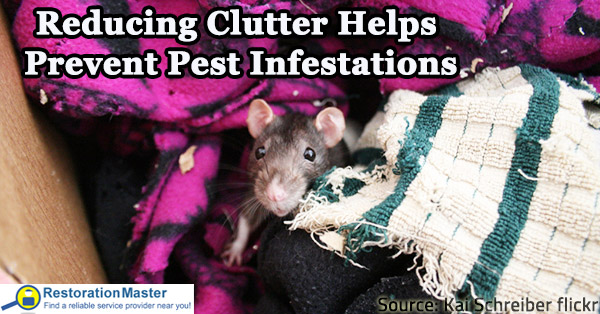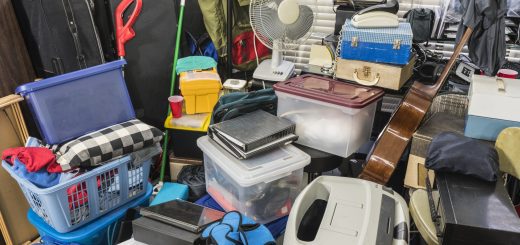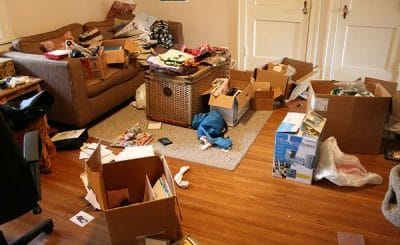Five Major Warning Signs of a Hoarder
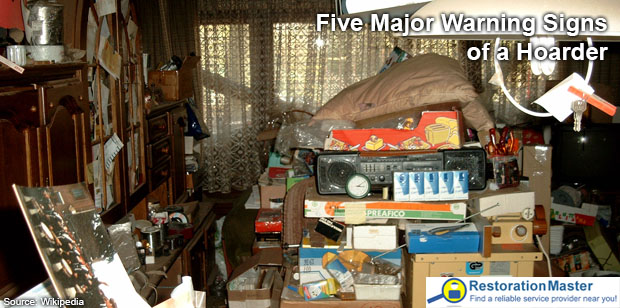
Hoarding Disorder in an apartment in the USA
To many people, it is difficult to understand hoarding disorders or how people that struggle with hoarding issues can allow their homes to fall into a messy and dangerous condition. There are between 10 and 15 million Americans that struggle with hoarding issues and their disorder typically goes through stages that get increasingly more severe as the disorder develops.
Hoarding is characterized by difficulty getting rid of possessions, even when they’re useless or have no value. Hoarders tend to accumulate items that are worthless, and often even toxic. The accumulation can reach a point where the hoarder can’t live normally in their own space and their family members may not be able to enter it either. To most people, hoarding seems like an irrational behavior; after all, who would choose to live with mountains of junk? The reason hoarders hold onto things is because they feel a deep emotional attachment to them. They use their things as a way to connect with other people, as well as for comfort and stability. Whatever the reason for hoarding, it’s important to recognize the signs in order to get help for yourself or someone you care about.
Matt Paxton, the host of the television show “Hoarders” and founder of hoarding solutions program, has come up with 5 stages of hoarding that he presents at his speaking engagements to educate people on the warning signs of hoarding and what causes hoarding.
Emotional cause
In almost all cases of hoarding, there is an emotional trigger that can be pinpointed to the start of the problem. This emotional cause can be grief from a variety of scenarios such as the loss of a loved one, a divorce, or disease among others. Those who suffer from depression and anxiety are especially vulnerable to keeping items as a response to their feelings—something they may not realize consciously but can still fuel their desire to hang on to things they don’t need.
Physical Replacement
When hoarding disorders intensify, the individual will place their self-worth in physical objects. Physical replacement takes place when the individual feels their identity or worth is threatened by something or someone in their environment. The biggest sign of a hoarder in this stage is that the individual will start buying things in bulk to have more physical objects around them. Physical replacement can be an indication of mental illness if it disrupts daily life or becomes so severe that it harms the person or others. Hoarders often have trouble with decision making, planning and organizing time, people and events. With no sense of priority or organization, it can be hard to discern what might be crucial for them to hold onto and what could be discarded.
Avoidance
If you have a family member or close friend that you suspect may be a hoarder, pay attention to who they allow in their home, if anyone. It’s normal for people to have their house open to visitors occasionally, but if their home is never open without an excuse or a warning, or if you’re never allowed in without a reminder about how messy it is, that’s a sign of avoidance. Hoarders often keep people out of their homes because they don’t want anyone to see how bad it is—they believe that the mess and clutter is nobody else’s business and don’t want to be judged for it. Someone who is preventing friends or family members from entering their home may be doing it to avoid confronting their hoarding issue.
Negative Physical Replacement
As the hoarding disorder develops, the physical replacement becomes more extreme as objects begin replacing friends and family in importance. The individual begins to feel that they can’t live without certain objects, and they may even begin to assign human characteristics to them. This is especially apparent if a hoarder has lost a loved one and responds by getting more objects or animals to clutter their home. A good rule of thumb is this: if the person doesn’t seem to have any personal relationships outside of their interactions with objects or animals, then it’s time for you to get involved and try to draw them out.
Dangerous Condition
As the hoard of collected items within a home grows, it begins to restrict access by blocking off certain areas of the home and it can harbor harmful moldMold is a type of fungus that grows in damp or humid conditi... More and bacteria growth which makes the house dangerous to live in. This is usually the stage when family members recognize that an individual is hoarding and help with the hoarding cleanup process.
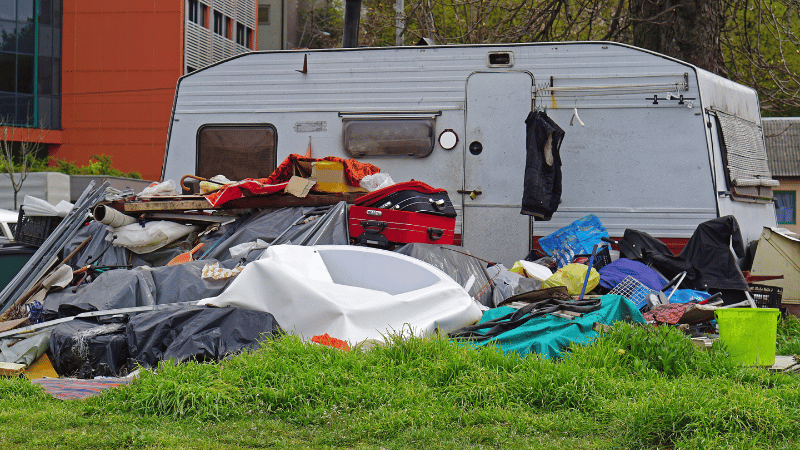
Hoarding issues in the back yard
It is important to keep in mind that everyone is different and these signs of hoarding may not manifest themselves in the same way in each individual case. But if you notice any similarity between these signs of a hoarder and the actions of a friend or family member that you suspect of hoarding, it is best to approach this individual about their hoarding disorder before it develops into a more severe case.
A friend or family member of a hoarder normally assumes the responsibility of helping a hoarder clean out their home and there are professional services that can help. Talk to a service provider that offers hoarding cleanup services to determine the best way to approach an individual who hoards as well as the appropriate hoarding cleaning methods.










